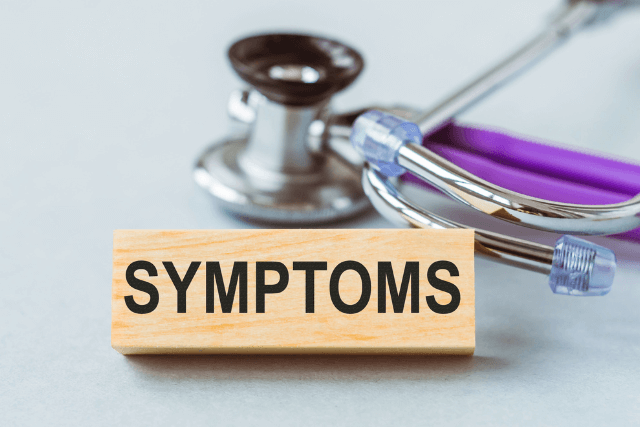Pilonidal cysts can be painful, frustrating, and disruptive to daily life. However, the good news is that you can take proactive steps to reduce the risk of developing them. By making small but impactful changes to your routine, you can significantly lower your chances of experiencing this condition. Here are five daily habits to prevent pilonidal cysts and keep your skin healthy.
1. Maintain Proper Hygiene to Prevent Pilonidal Cysts
One of the most important steps in preventing pilonidal cysts is keeping the affected area clean. Since these cysts typically form in the tailbone region, maintaining hygiene in that area is crucial. Practicing good skin hygiene tips can go a long way in preventing infections and reducing irritation.
How to Maintain Hygiene
- Wash Daily: Use a mild, antibacterial soap to cleanse the area thoroughly. This helps remove bacteria, sweat, and oil buildup, reducing the risk of pilonidal cysts. Cleaning the area should become part of your daily routine, especially if you sweat frequently.
- Dry Properly: After bathing, make sure the area is completely dry. Otherwise, moisture can create an environment where bacteria thrive, leading to infection and pilonidal cyst formation. Using a soft towel or a hairdryer on a cool setting can help with this.
- Use Gentle Cleansing Wipes: If you sweat a lot during the day, consider using unscented cleansing wipes to keep the area fresh. This small but effective habit can help prevent pilonidal cysts, especially after workouts or long periods of sitting.
- Apply Antiseptic Powder: To further protect against bacterial infections and moisture buildup, applying antiseptic powder can help keep the area dry and reduce the risk of pilonidal cysts.
Hygiene plays a vital role in skin health, and by following these simple steps, you can lower the chances of infection and cyst formation. Keeping your skin free from dirt and sweat will help reduce irritation and improve overall comfort.

2. Avoid Prolonged Sitting to Reduce Pilonidal Cysts
Sitting for long hours puts pressure on the lower back and tailbone, increasing the risk of pilonidal cysts. If your lifestyle or job requires prolonged sitting, making small changes can significantly help with tailbone cyst prevention.
Ways to Reduce Sitting Time for Tailbone Cyst Prevention
- Take Breaks: Stand up and walk around every 30-60 minutes to relieve pressure on your lower back and reduce the risk of pilonidal cysts. This simple action can make a big difference in preventing discomfort and irritation.
- Use an Ergonomic Chair: A chair with proper lumbar support can reduce strain on your tailbone and help with pilonidal cyst prevention. Investing in an ergonomic seat cushion with a tailbone cutout can also help distribute pressure evenly.
- Try a Standing Desk: If possible, alternate between sitting and standing throughout the day to avoid prolonged pressure on the lower back. This can help improve posture and circulation, further reducing the risk of pilonidal cysts.
- Engage in Stretching Exercises Regular stretching can alleviate pressure on your lower back. Yoga and mobility exercises focused on the spine and hips can help relieve tension and prevent pilonidal cysts.
- Avoid Sitting on Hard Surfaces Sitting on hard surfaces for long periods can increase friction and irritation, leading to cyst formation. If you must sit for long hours, use a cushioned seat to reduce discomfort.
By making these adjustments, you reduce friction and pressure that contribute to pilonidal cyst development. Taking short breaks to move around and adjusting your posture can help keep your tailbone area healthy.
3. Keep the Area Hair-Free to Avoid Ingrown Hair Cyst Care
Excessive hair in the lower back region can lead to ingrown hairs, which may trigger pilonidal cyst formation. Keeping the area hair-free is one of the most effective skin hygiene tips to prevent pilonidal cysts.
Best Hair Removal Methods to Prevent Pilonidal Cysts
- Shaving: Use a gentle razor, but be careful to avoid irritation and prevent pilonidal cysts. Shaving should be done with a clean, sharp blade to reduce the risk of nicks and cuts that can lead to infections.
- Trimming: Electric trimmers are a safer option that reduces the risk of ingrown hairs and contributes to ingrown hair cyst care. Keeping hair short prevents excessive friction and helps maintain cleanliness.
- Laser Hair Removal: This long-term solution can prevent hair regrowth and significantly lower the likelihood of pilonidal cysts. Laser treatments can be a good option for individuals who experience recurrent cysts due to excessive hair growth.
- Depilatory Creams: If shaving or trimming irritates your skin, using a gentle depilatory cream may be a good alternative. Always test the product on a small area before applying it to the tailbone region.
Whichever method you choose, be sure to keep the skin moisturized and free from irritation to support tailbone cyst prevention. Avoid using harsh products that may cause inflammation or allergic reactions.
4. Wear Loose and Breathable Clothing to Reduce Lower Back Irritation
Tight clothing increases friction, leading to irritation and excessive sweating. Wearing breathable fabrics can help prevent pilonidal cysts by keeping the skin dry and reducing friction.
Clothing Tips for Pilonidal Cyst Prevention
- Choose Cotton Fabrics: Cotton is breathable and absorbs moisture, keeping the skin dry and reducing lower back irritation. Therefore, avoid synthetic fabrics that trap heat and sweat.
- Avoid Tight Pants: Opt for loose-fitting bottoms to minimize friction and help with tailbone cyst prevention. Tight jeans and leggings can create unnecessary pressure on the lower back.
- Change Clothes After Sweating: If you sweat a lot, change into dry clothes as soon as possible to prevent pilonidal cysts. Sweaty clothing creates an environment where bacteria can thrive, increasing the risk of infection.
- Use Moisture-Wicking Underwear: Special moisture-wicking fabrics help draw sweat away from the skin, keeping the area dry and comfortable.
- Wear Soft Waistbands: Avoid belts or waistbands that dig into your lower back, as they can cause irritation and, therefore, increase the risk of cyst formation.
Comfortable clothing plays a crucial role in preventing irritation and keeping the skin healthy while supporting ingrown hair cyst care. The right fabrics and fit can make a significant difference in keeping the tailbone area dry and free from irritation.

5. Maintain a Healthy Weight for Effective Pilonidal Cyst Prevention
Excess weight can increase pressure on the tailbone, making pilonidal cysts more likely. Additionally, individuals with higher weight may experience more friction in the lower back area, leading to cyst formation.
How to Maintain a Healthy Weight to Prevent Pilonidal Cysts
- Eat a Balanced Diet: Incorporate fruits, vegetables, lean proteins, and whole grains into your meals to support skin hygiene tips. A healthy diet helps maintainskin integrity and reduces inflammation.
- Stay Active: Engage in at least 30 minutes of physical activity daily to reduce the risk of pilonidal cysts. Walking, swimming, and strength training are excellent ways to stay fit without putting excessive strain on your lower back.
- Drink Plenty of Water: Hydration supports skin health and overall well-being, making it an essential habit for pilonidal cyst prevention. Proper hydration helps maintain skin elasticity and reduces irritation.
- Monitor Your Posture: Poor posture can contribute to excess pressure on your tailbone. Consequently, strengthening your core and maintaining good alignment can reduce the risk of cyst formation.
Managing your weight not only reduces the risk of pilonidal cysts but also promotes overall health, making it an essential part of tailbone cyst prevention. A well-balanced lifestyle contributes to long-term well-being.
Conclusion
If you are experiencing symptoms of pilonidal cysts, it is essential to seek professional help. Our specialists are here to provide expert care and treatment. Schedule an appointment today to address your concerns and prevent complications.



